Everything you need to know about marble
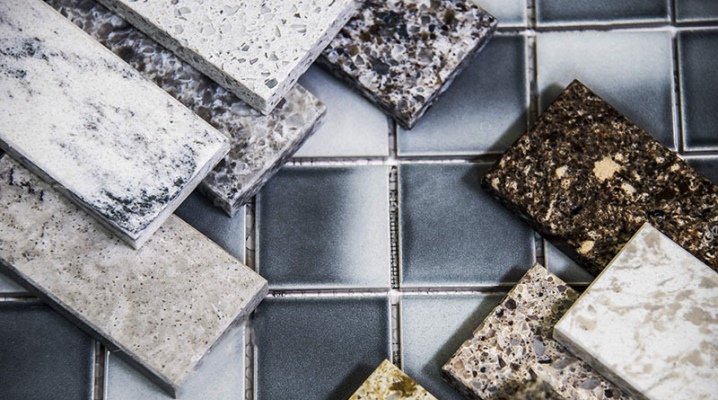
Even in ancient times, palaces were built from it, used in the manufacture of jewelry and used for ancient occult teachings. Once upon a time, women wore jewelry with this mineral, believing that it helps to promote health. And its natural energy has a beneficial effect on the nervous system, helps in the treatment of respiratory diseases and even normalizes blood pressure. At least that's what the adherents of lithotherapy say. And all this is about marble.


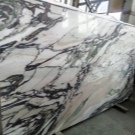
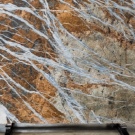
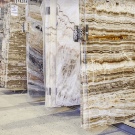
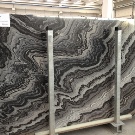
What it is?
Marble is one of the types of rock that appeared during the alteration of dolomite and limestone crystals. There are many organic inclusions in the composition of marble. This mineral has a granular massif, a varied color, an inhomogeneous pattern with curls.
The origin of the stone is associated with the process of metamorphism. That is, magmatic and sedimentary rocks began to transform inside the layers of the earth's crust.
The resulting stone became very hard and waterproof, therefore many products made of marble have survived through the millennia to the present day.
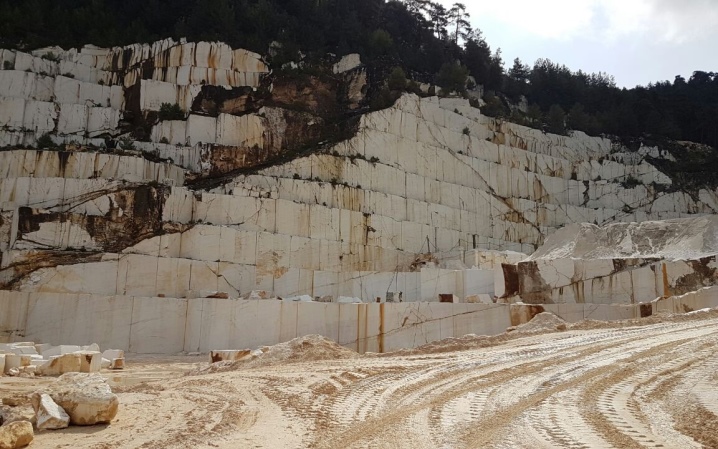
Marble is formed gradually. Limestone and dolomite are recrystallized, and this crystalline structure is visually discernible in the rock. Natural marble contains a wide variety of minerals: from feldspar to quartz. Its characteristics depend on how many impurities there are in the stone. That is, impurities affect the description of the marble, its appearance, hardness, and scope of use.
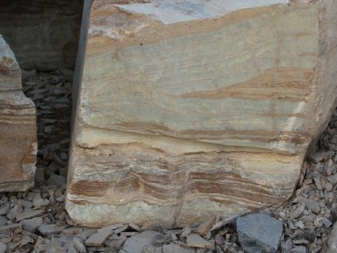

Limestone and dolomite are the main constituents of marble. The structure of the first component contains the remnants of living organisms that once existed on the planet. Dolomites, on the other hand, were formed not without the influence of the saline waters of the sea and groundwater, which got potassium. The texture of the stone depends on the combination of the main components. Visually, this is almost always a vague pattern with specks of an elongated or rounded shape.
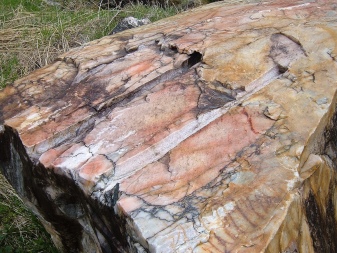
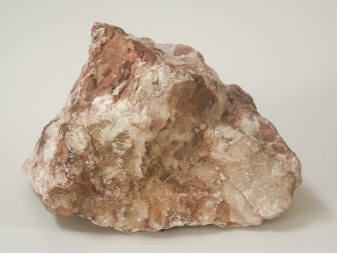
This natural material has a minimum of disadvantages. It shines under the rays of the sun, looks alive and iridescent, it shines under the raindrops. Sculptors adore the pliability of marble and have been using it since ancient times to decorate architectural buildings, to create sculptures, urban furnishings, etc.
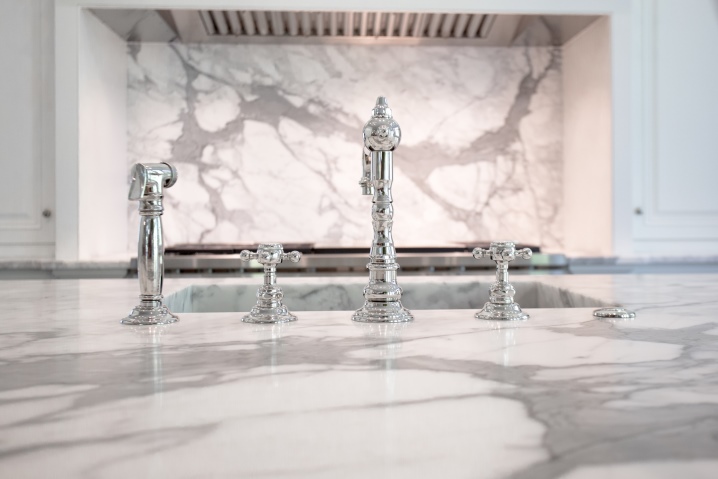
Basic properties
Physical properties depend on the impurities contained in the marble. Therefore, presenting the main characteristics, we can only talk about the average value.
Physical properties of marble:
- density - 1900-2900 kg / m3;
- porosity - no more than 1%;
- water absorption - 0.15-0.6;
- hardness (according to Mohs) - 3-4;
- the level of resistance to faults - 10-3 MPa;
- compression rate - 100-250 MPa;
- specific gravity - 2.7 g / cm3.


And now a little more about what the main list of properties of marble consists of. Marble by structure and composition – winning material because:
- it is characterized by high durability, it is possible to speak about age-related changes in marble only after 100-150 years, before this time is reached, a marble product looks unchanged;
- it has excellent water resistance - therefore, bathrooms and swimming pools are successfully finished with stone;
- it has excellent heat resistance - therefore, even when creating fireplaces, this material is used without a doubt;
- it is environmentally friendly - the level of natural radioactivity of marble is classified as class 1, therefore any objects are built from the material;
- marble is a breathable material;
- its decorative qualities are impeccable - it is a noble and elegant material that transforms in the sun's rays and does not need additional decoration.
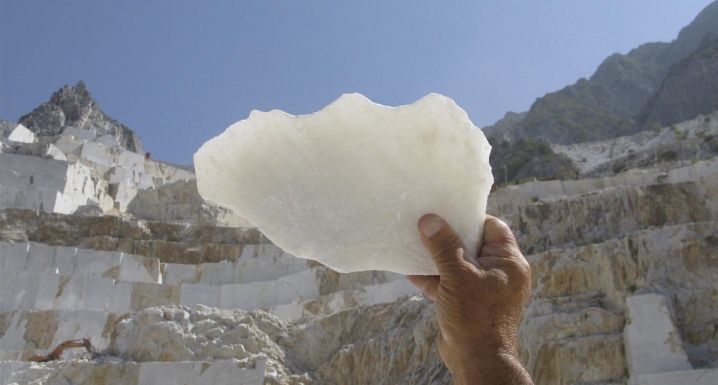
Marble can be natural and artificial.
- Natural (or mineral) - this is a rock formed with the participation of limestone and dolomites.
- Artificial marble is a composite material created not under the condition of natural crystallization of natural components, but by mixing acrylic resin with mineral fillers.

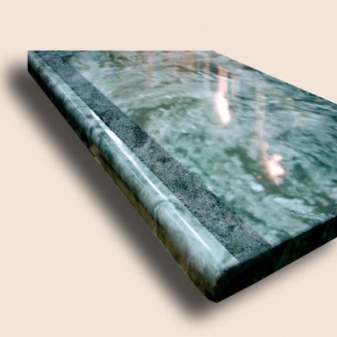
Deposits and production
There are not so few places where marble is mined. One of the most famous such points on the planet is the italian city of Carrara in Tuscany... Not far from it, a special white marble is mined, very valuable. For example, the famous Russian sculptor Aidan Salakhova actually lives and works there.
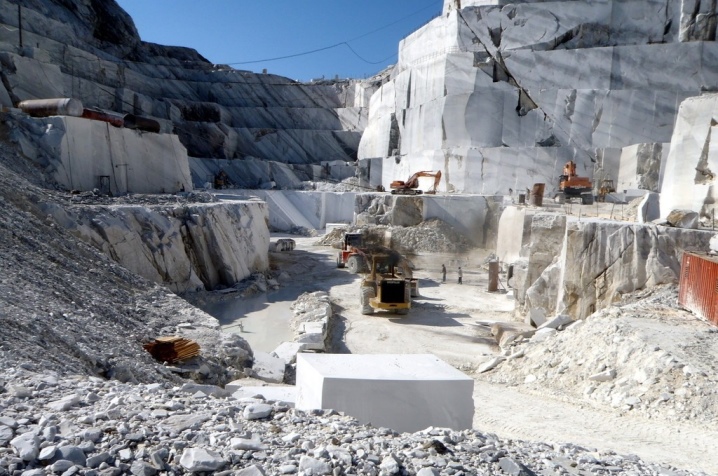
V Greece found deposits of the Parian stone, known for its yellowish color. Marble is mined in France, Norway and Cuba... The most famous marble deposit in North America is Appalachian... There are many points rich in marble mining in Armenia, marble of brown, black, pink tones are mined there.
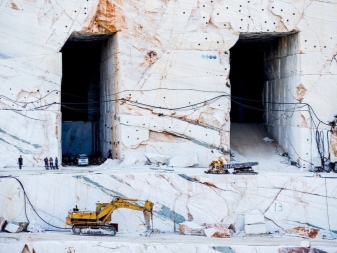
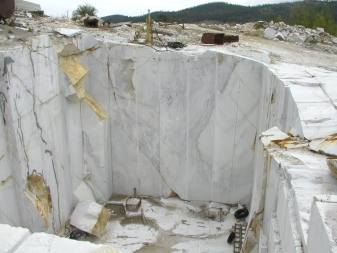
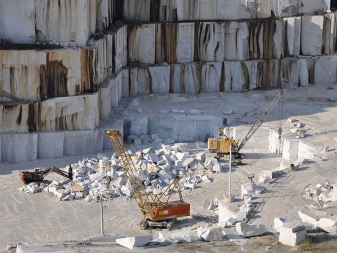
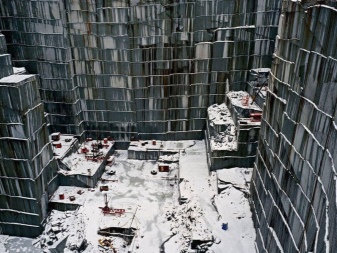
V Georgia find minerals of gray and red color, and in Uzbekistan - cream and pinkish shades. Sayan marble is found in Sayan, Ufaleisky - in the Urals, Jurassic - in Bavaria. Spain, Turkey are also known as the places where this unique natural product can be found.
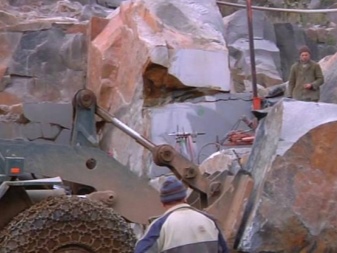
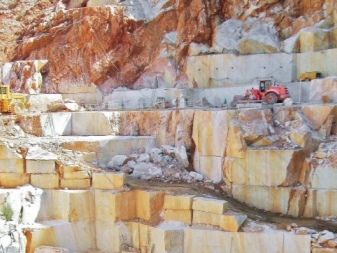
Species overview
The peculiarity of marble also lies in the fact that admixtures make it completely different visually: they create unique views in colors and patterns. And this palette of shades is unique, there is little it can be compared with in nature.
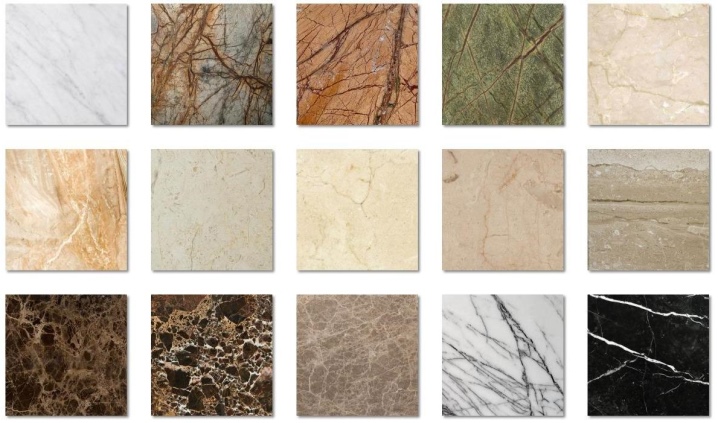
White
This is one of the most unique types of rock. For sculptors, it is the most attractive because it is not only malleable, but also allows you to create very beautiful works. There is white marble with subtle, delicate colored veins that look impressive.
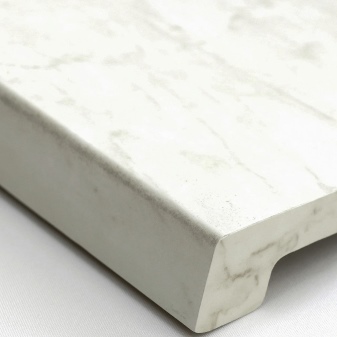
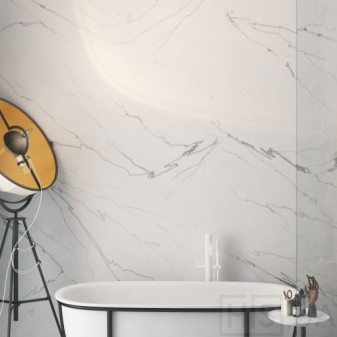
Green
This color is due to the presence of iron-containing silicates in the material. It is they who give the mineral a dark rich color. Blotches in the main color are either brown or white. In the drawing of natural material, you can see branches or waves.
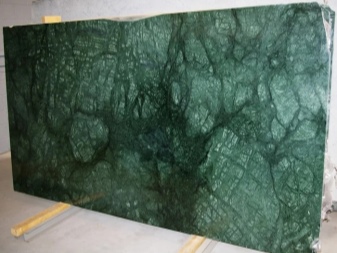
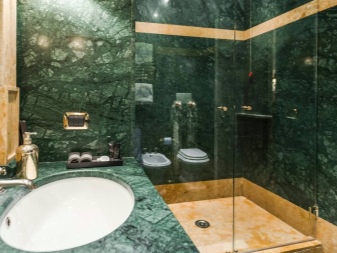
Blue and blue
Cyan is represented by a mixture of blue itself with white and gray. Diopside can be ascribed a leading role here. How much of it is in the composition of the rock, this will be the saturation of the blue / blue of the marble. The shade can go up to deep blue.


Red
And this is one of the most expensive types of marble. The fact is that the red color is due to the content of iron oxide in the composition of the material. Due to iron, marble acquires richness, expressiveness, the aesthetic characteristics of such a material were noticed in antiquity.
The most beautiful palaces were built from red marble; today it is considered a status material in decoration and is used in the design of various halls for celebrations.
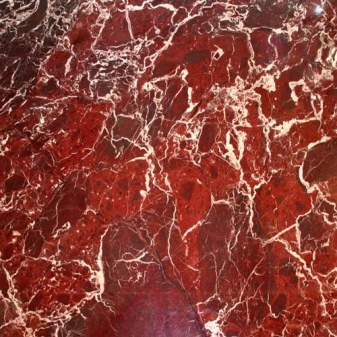
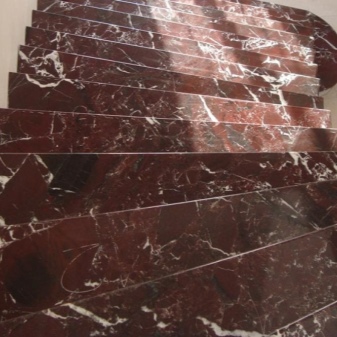
Pink
It also contains iron oxide, but not in such large quantities as in red marble. The veins of a dark green hue give this look a special appeal. It is a very delicate blonde look with a light creamy undertone.
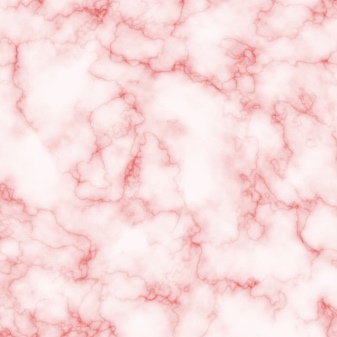
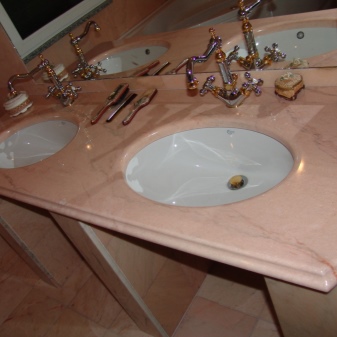
Yellow
It is also called golden, as well as the color of the sun. All shades of yellow present in the natural stone palette are good. Together with beige, they create amazing stains, drawings that could hardly be so beautiful if they had a man-made origin. Beautiful window sills, countertops and tables, and various decorative items are often made of yellow marble.
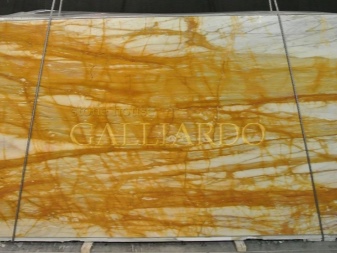
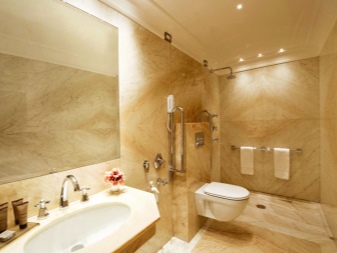
Beige
It is divided into cream, coffee and rich dark subspecies. The stains on the surface of the beige marble are very interesting.This is due to limonite and manganese inclusions in the composition of the material. Beige marble is considered to be particularly durable, which is why it is used very often for seamless flooring. For example, a tile made of beige stone will definitely last for decades.
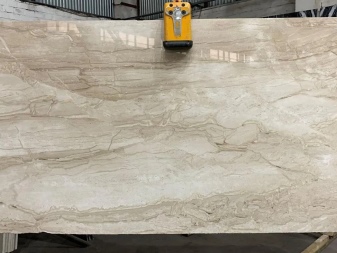
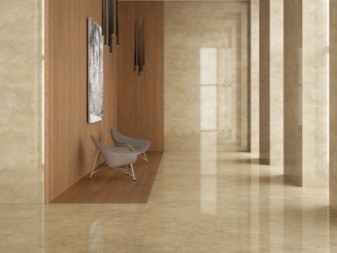
Gray
This material is either coarse-grained or fine-grained. The veins in gray marble are either dark yellow, or white, or even pale pinkish. Good and dark gray appearance, very resistant to harmful substances.
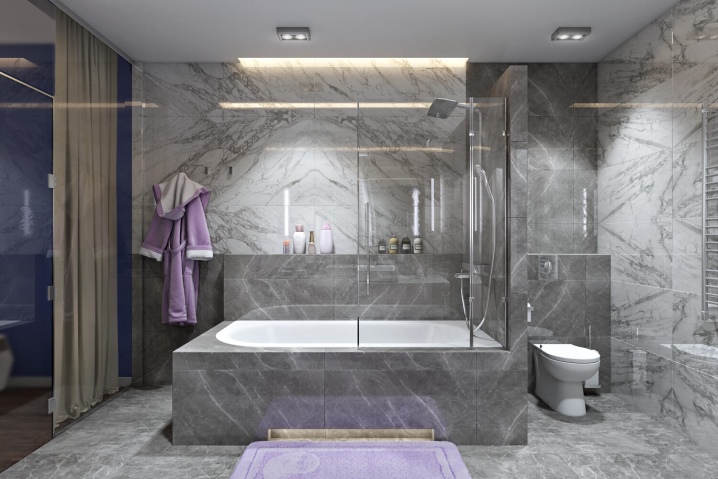
Brown
Suitable for the manufacture of kitchen countertops, for bar shelves and window sills, for the manufacture of fireplaces. It looks interesting together with purple decor: for example, with a purple flower growing in a flowerpot on a windowsill just made of brown marble. This type of marble is also wonderfully combined with beige shades of stone.
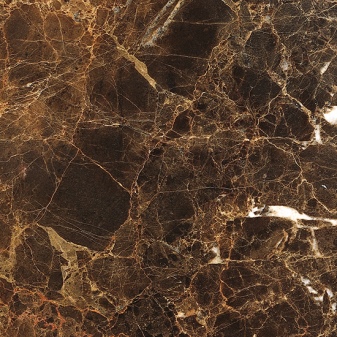

Black
And this variety is considered very rare, because it is associated with volcanic activity. An admixture of graphite or bitumen is responsible for this radical shade. The specks and veins in black marble are golden, which looks simply luxurious and, of course, affects the price.
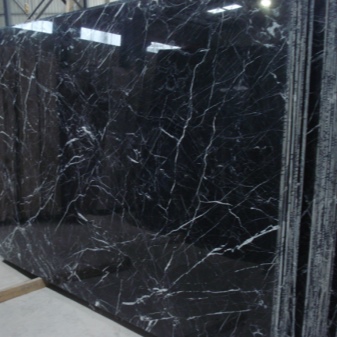

Applications
The widest area in which marble is used is construction, design, decoration... Marble is used both as decoration of buildings (both internal and external) and as decoration of individual elements. It is used to make both architectural monuments that will stand for many decades without changing their original appearance, and tombstones.
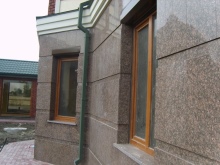
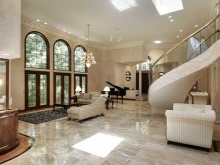

Elegant steps and railings, beautiful window sills, shower trays, bathroom fixtures are made from marble. Marble skirting boards, trays and crockery are all that look expensive and are also designed to last.
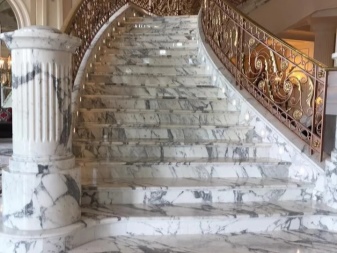
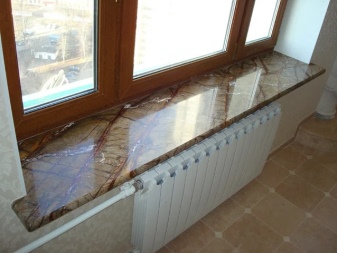

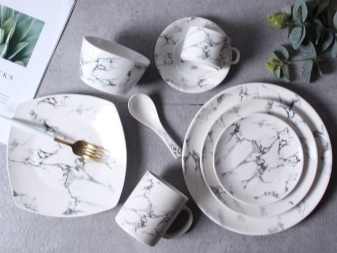
Of course, various decorations are also made of marble. Such decor in the form of pendants, rings, beads can really be passed on from generation to generation, because with proper care it does not fade, does not break, does not change its characteristics.
Various decorative features of such products are beautiful, for example, carving on marble.
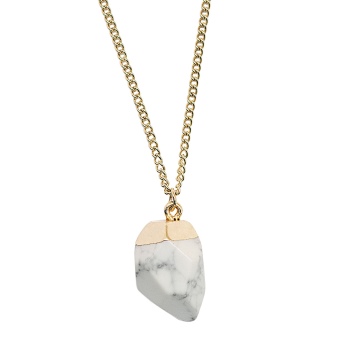

And they also make from natural material various massage devices, balls, rollers etc. This is due to the fact that marble has valuable characteristics for medical and health procedures. Smooth stone balls have a wonderful effect on muscles, skin and joints. For those who are not inclined to deny the magical properties of the stone, marble is valuable for its "peacefulness". It is believed that this material is able to establish stable relationships, become a guarantee of peace and harmony, that it protects the spiritual health of a person.
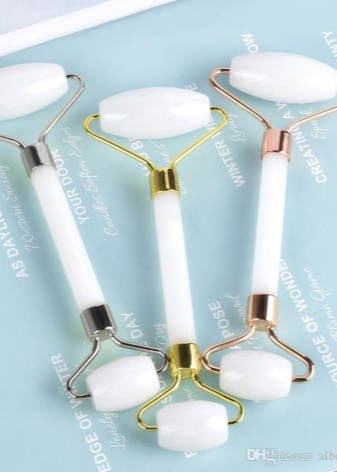

How do I verify the authenticity?
Of course, almost everyone can become a victim of a scammer who sells imitation under the guise of natural material. Unless he familiarizes himself with some of the nuances in advance that do not allow him to deceive the buyer.

There are such methods for determining the naturalness of the material.
- Drawing. Artificial stone will have a symmetrically repeating print, natural - it is always a small and chaotically repeating image.
- Temperature. Even indoors, the natural material will always stay cool.
- Shine. Polymer products have a mirror-like surface, but natural marble, despite the processing, cannot reflect objects.
- Colors. The imitated material, surprisingly, does not have such a variety of colors as natural.
- Structure. Natural stone is heterogeneous, it has many different inclusions, veins and voids. The imitation is more dense in structure.
- Reaction. The mineral is afraid of acid, it will begin to dissolve under its action (and this is one of the few disadvantages of marble).
- Field. You always have to ask where this stuff comes from. For example, in Russia the Urals, Altai, Siberia, and Karelia are considered to be large deposits.The seller must have an appropriate certificate.
- Price. It is sometimes the main clue in determining naturalness. Natural stone cannot be cheap.
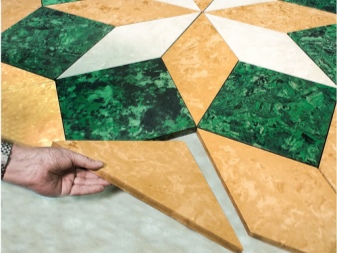
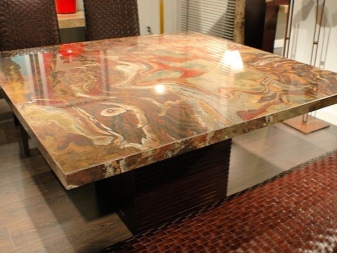
Of course, in many cases, imitation is not bad, it has qualities sufficient for acquiring an artificial product. But if the task is to purchase exactly a marble product that will serve for a very long time virtually without visible wear, you will have to spend money.
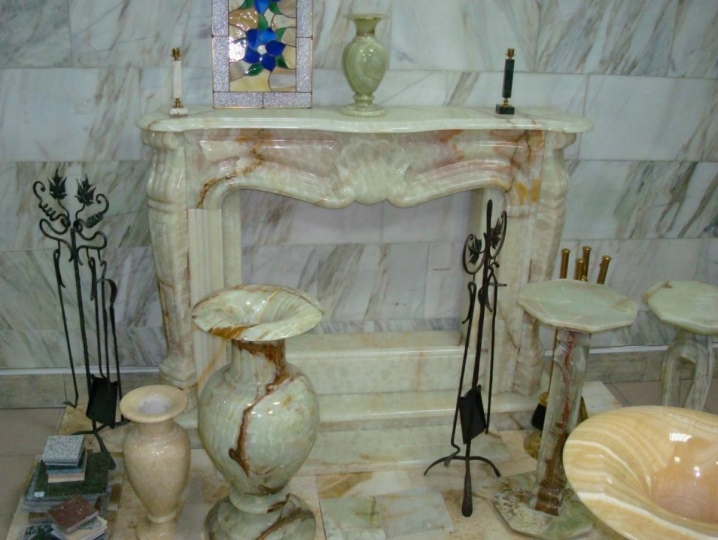
The nuances of transportation
To organize the safe delivery of marble, you need to thoroughly prepare for this event. The cost of making a mistake is too high. We need not just special transport, but also insurance policies for each loader involved in the process. Marble items are transported and carried using special fasteners. In this case, they do not save on specialists. If the customer thinks he can handle it himself, mistakes are very common. But turning to companies that are engaged in such transportation removes the burden of excitement from the shoulders of the customer.
Specialists will bring and bring marble to any floor.


Installation features
In order, for example, to lay marble on a wall, the surface must first be leveled, strengthened, cleaned, primed. The walls are leveled with either cement mortar, or plaster, or sheets of drywall. True, the plaster may not bear the weight of the marble.
Wall cladding with marble can be carried out using glue, concrete mortar, or mechanically. The adhesive for the installation of marble should be of a special consistency: almost like a cement mortar, only not very thick. An adhesive composition is applied both to the surface to be faced and to the back of the marble.
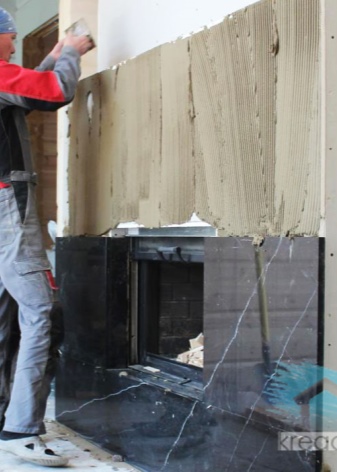
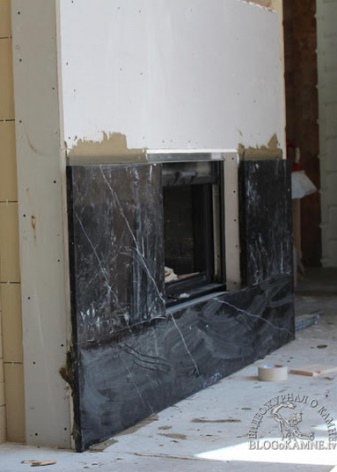
Concrete mortar is usually chosen as a fixer when marble slabs need to be fixed on the wall (or not on the wall).
The composition is mixed with a special mixer, diluted strictly according to the instructions. And if you need a decorative seam between the plates, you must first mix the pigment into the solution. But you can do it differently: using decorative putty after installation is also a good idea. She processes the seams of already fixed marble tiles. The mechanical method applies only to work on the floor surface. In this case, the material will keep on the floor due to frame profiles, chipboard blocks, etc.
How to mount marble on the wall, see the video.
Care and restoration
It is very difficult to restore marble, it is a multi-stage complex process. Usually, the restoration is folded in this way.
- First you need to remove all surface drops of the marble product. The marble is to be deeply sanded. Special equipment is indispensable.
- Further, the technology of abrasive friction is used, which helps to re-grind the stone and polish it. This will smooth the marble again.
- The time has come for the crystallizer: this is also the lot of specialists. Special low-speed rotary machines are used. It is in the process of technical crystallization that the material will shine and return to its original color.
- If necessary, all seams and chips that are on the stone are corrected.
- After that, you can start protecting the material, which is helped by various polymer compositions. This is done so that aggressive environmental factors do not destroy the restoration product in the future.
- Sometimes the stone is strengthened with special coatings, but this always happens on an individual request (depending on the state of the marble product, its scope, etc.)
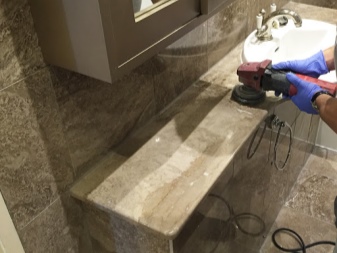

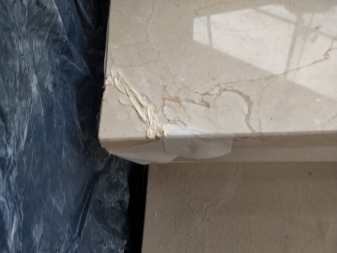
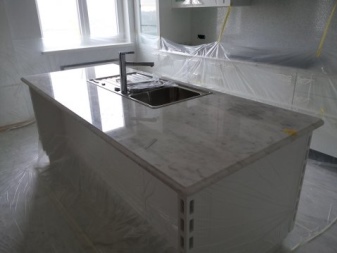
To restore marble floors, for example, antique marble technology is often used.
Special abrasive plastic brushes of different grain sizes are used. The result is a deliberately aged stone. Usually this technology is used in bathrooms, swimming pools: where it should not be slippery.

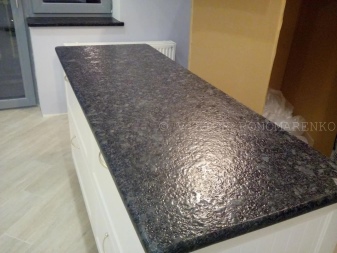
How to care for marble?
- A piece of soft cloth and water are enough to clean the countertop. Without any special means, everyday dirt is washed off the surface in this way. And the marble is polished with suede.
- If a stain has formed on the stone, which cannot be removed simply with a cloth and soapy water, you need to act differently. A colorless (this is important!) Sponge or napkin is taken, a paper towel is also possible. The material must have pronounced moisture-absorbing properties. Then this material must be impregnated with a special solution (often acetone) and placed on the part of the marble where the stain has formed. Sometimes it is enough 1 hour to remove the stain, sometimes it is at least 24 hours.
- Some remedies that help remove stains include hydrogen peroxide, ammonia, bleach.... Chalk chips or starch will help remove greasy stains and oils.
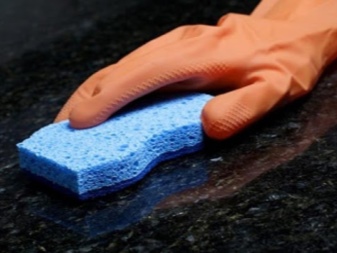
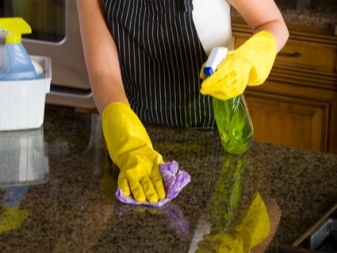
As soon as a marble product appears in the house, it is worth buying special cleaner for natural stone and in case of urgent "household repair" and stain removal, apply it, having read the instructions in advance. And if a thin wax layer is applied to marble from time to time, it will provide it with protection from stains, damage, and increase the service life of the stone. Natural material is durable, beautiful, environmentally friendly, out of fashion and trends, so its demand does not fall.














The comment was sent successfully.